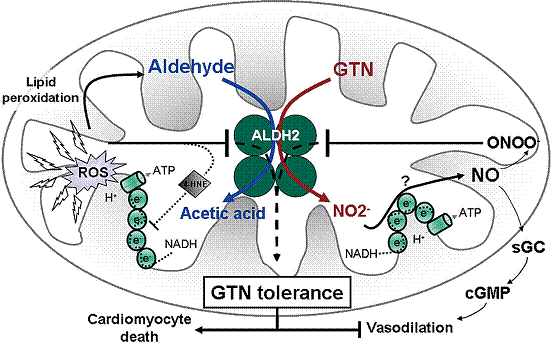JAMA:测试肌钙蛋白I可快速帮助诊断心肌梗死
2012-01-01 MedSci原创 MedSci原创
12月28日,《美国医学会杂志》上的一则研究"Serial Changes in Highly Sensitive Troponin I Assay and Early Diagnosis of Myocardial Infarction"披露,对那些因为胸痛而被急诊部门收治的病人来说,用一种同代的或对肌钙蛋白I (肌肉组织中的一种蛋白)浓度高度敏感的检测方法可帮助排除心肌梗塞的诊断,而这一生物标
12月28日,《美国医学会杂志》上的一则研究"Serial Changes in Highly Sensitive Troponin I Assay and Early Diagnosis of Myocardial Infarction"披露,对那些因为胸痛而被急诊部门收治的病人来说,用一种同代的或对肌钙蛋白I (肌肉组织中的一种蛋白)浓度高度敏感的检测方法可帮助排除心肌梗塞的诊断,而这一生物标记在收治后3小时的时候的检测浓度的改变可能对确诊心肌梗塞有用。
文章的作者写道:“根据国际上的共识及专案任务组对心肌梗塞[MI,心脏病发作]的定义,MI的诊断主要基于升高的心源性肌钙蛋白 I浓度超过第99百分位数,并显示随着时间推移这一浓度会有增加或降低。”最近,人们研发了高度敏感的肌钙蛋白浓度的检验方法,它能在超过50%的一般人群中可靠地检定肌钙蛋白的浓度。
德国汉堡大学心脏中心的Till Keller, M.D.及其同事对新近研发的高度敏感的肌钙蛋白I (hsTnI) 检测法与某一同代的肌钙蛋白I (cTnI)检测法的诊断性能的比较,及它们在心肌梗塞诊断中的序列变化进行了评估。这项研究包括疑似患有急性冠脉综合症(即诸如心肌梗塞或心绞痛等疾病)的总数为1,818的患者,他们是在2007年至2008年间被德国的胸痛病房收治的。这些病人在入院时及在入院后3小时和6小时的时候接受了包括 hsTnI 和 cTnI等12种生物标记的检测。
在这些参与研究的病人中,有413人(22.7%)的最终出院诊断为急性MI。就区别急性MI来说,hsTnI 和 cTnI都比其它的被评估过的诊断性生物标记更为优越。用第99百分位数作为界限,入院时的hsTnI的敏感性为82.3%,阴性预测值(NPV)为 947%;在入院后3小时的时候测定的 hsTnI的敏感性为98.2%,而NPV为99.4%。与hsTnI相比,cTnI检测(用第99百分位数作为界限)的敏感性和NPV具有可比性:入院时的敏感性为79.4%,NPV为94.0%;而入院后3小时的时候的敏感性为98.2%,NPV为99.4%。
文章的作者写道:“将入院时肌钙蛋白浓度的第99百分位数界限与入院3小时内肌钙蛋白的序列变化相结合,hsTnI 的阳性预测值(用来排除急性MI)从入院时的75.1%增加至入院后3小时的时候的95.8%;对cTnl来说,该值从入院时的80.9%增加至入院3小时的时候的96.1%。”
研究人员写道:“在疑似MI的病人中检测hsTnI 和 cTn可提供有用的诊断资讯。确定被急诊部门收治后3小时的时候的hsTnI 与 cTnI数值并用第99百分位数的界限可提供人们大于99%的NPV,从而可使人们安全地排除MI。将入院后3小时内的 hsTnI 或 cTnI浓度的相对变化与入院时第99百分位数的界限值相结合可提高特异性,并可令早期MI的精确诊断变得容易。”(生物谷Bioon.com)

doi:10.1001/jama.2011.1896
Serial Changes in Highly Sensitive Troponin I Assay and Early Diagnosis of Myocardial Infarction
Till Keller, MD; Tanja Zeller, PhD; Francisco Ojeda, PhD; Stergios Tzikas, MD; Lars Lillpopp; Christoph Sinning, MD;et al.
Context Introduction of highly sensitive troponin assays into clinical practice has substantially improved the evaluation of patients with chest pain.
Objective To evaluate the diagnostic performance of a highly sensitive troponin I (hsTnI) assay compared with a contemporary troponin I (cTnI) assay and their serial changes in the diagnosis of acute myocardial infarction (AMI).
Design, Setting, and Patients A total of 1818 patients with suspected acute coronary syndrome were consecutively enrolled at the chest pain units of the University Heart Center Hamburg, the University Medical Center Mainz, and the Federal Armed Forces Hospital Koblenz, all in Germany, from 2007 to 2008. Twelve biomarkers including hsTnI (level of detection, 3.4 pg/mL) and cTnI (level of detection, 10 pg/mL) were measured on admission and after 3 and 6 hours.
Main Outcome Measures Diagnostic performance for AMI of baseline and serial changes in hsTnI and cTnI results at 3 hours after admission to the emergency department.
Results Of the 1818 patients, 413 (22.7%) were diagnosed as having AMI. For discrimination of AMI, the area under the receiver operating characteristic (ROC) curve was 0.96 (95% CI, 0.95-0.97) for hsTnI on admission and 0.92 (95% CI, 0.90-0.94) for cTnI on admission. Both were superior to the other evaluated diagnostic biomarkers. The use of hsTnI at admission (with the diagnostic cutoff value at the 99th percentile of 30 pg/mL) had a sensitivity of 82.3% and a negative predictive value (for ruling out AMI) of 94.7%. The use of cTnI (with the diagnostic cutoff value at the 99th percentile of 32 pg/mL) at admission had a sensitivity of 79.4% and a negative predictive value of 94.0%. Using levels obtained at 3 hours after admission, the sensitivity was 98.2% and the negative predictive value was 99.4% for both hsTnI and cTnI assays. Combining the 99th percentile cutoff at admission with the serial change in troponin concentration within 3 hours, the positive predictive value (for ruling in AMI) for hsTnI increased from 75.1% at admission to 95.8% after 3 hours, and for cTnI increased from 80.9% at admission to 96.1% after 3 hours.
Conclusions Among patients with suspected acute coronary syndrome, hsTnI or cTnI determination 3 hours after admission may facilitate early rule-out of AMI. A serial change in hsTnI or cTnI levels from admission (using the 99th percentile diagnostic cutoff value) to 3 hours after admission may facilitate an early diagnosis of AMI.
本网站所有内容来源注明为“梅斯医学”或“MedSci原创”的文字、图片和音视频资料,版权均属于梅斯医学所有。非经授权,任何媒体、网站或个人不得转载,授权转载时须注明来源为“梅斯医学”。其它来源的文章系转载文章,或“梅斯号”自媒体发布的文章,仅系出于传递更多信息之目的,本站仅负责审核内容合规,其内容不代表本站立场,本站不负责内容的准确性和版权。如果存在侵权、或不希望被转载的媒体或个人可与我们联系,我们将立即进行删除处理。
在此留言









#肌钙蛋白I#
66